How to weave furniture from newspaper tubes?
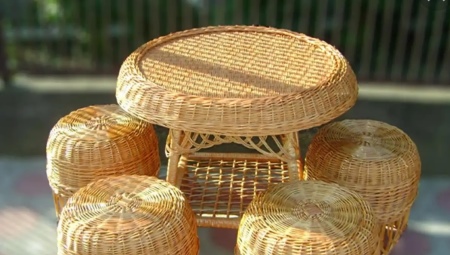
Weaving furniture from newspaper tubes is a great creative activity that allows you to make furnishings or decorative items for your home. The apparent fragility of this material is quite deceiving; with the right approach, it becomes no more fragile than a vine or birch bark. Step-by-step master classes will help you to understand the manufacturing technique and find ideas for weaving furniture from the newspaper with your own hands, with which you can try yourself in this creative business.
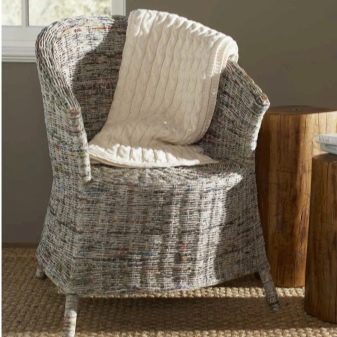
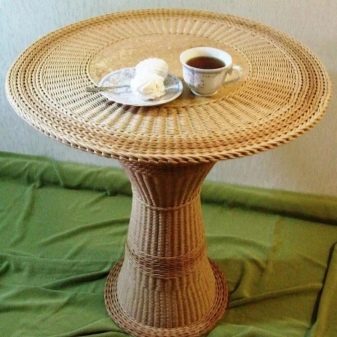
Preparation
Making furniture and decor items from an ordinary newspaper has become a real trend in Japan. It was here that art was born, requiring a certain patience and attention from the master. Weaving paper furniture can be done using glossy or newspaper sheets, divided into strips with a width of 70 to 100 mm.
The resulting blanks are wound on knitting needles, skewers or ordinary pencils, making one of the ends a little thicker.
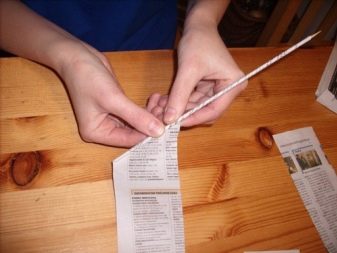
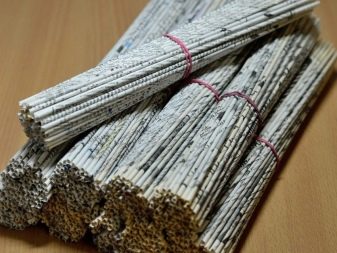
The process of preparing the material can be represented as follows.
- The newspaper sheet is folded longitudinally twice and then cut. It turns out 4 stripes of the same size.
- The strips are aligned to the desired length.
- The workpieces are applied at an angle of 20-30 degrees to a knitting needle or skewer and screwed diagonally onto the base up to half.
- It is better to coat newspaper sheets with glue.
- Take out the base. This must be done carefully, slightly drying the glue.
- It remains to screw the tube to the end, adding an adhesive composition to fix the layers of paper.
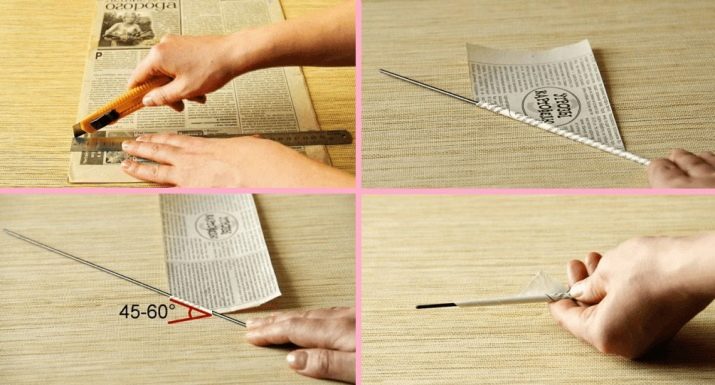
For the manufacture of pieces of furniture - chairs, armchairs, footrests - a rigid frame is necessarily used. It is made from furniture plywood or other wood-based materials (fiberboard, chipboard). To prepare wood blanks for the frame, you will need saws, chisels, jigsaws, clamps. In addition, it is necessary to ensure that the master has at his disposal a work table with drawers for workpieces and a special board fixed to the table top.
Hoops, patterns, frames made of thick cardboard should be prepared in advance.
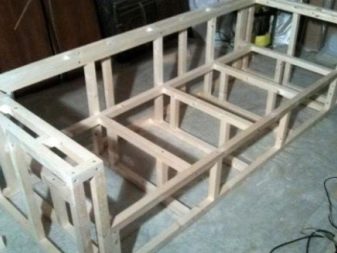
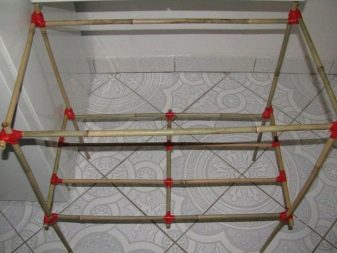
And you will also have to stock up on the following auxiliary tools:
- scissors;
- with a simple pencil;
- a knife for cutting paper;
- PVA glue;
- adhesive tape;
- paints and varnishes (stain, varnish).
After completing the preparatory work, you can move on to weaving furniture. Step-by-step instructions will help you understand the process.
Interesting options
Weaving furniture from newspaper tubes with your own hands is a rather exciting activity. Using simple techniques, you can create original decor items and completely functional products, including furniture. There are detailed master classes that make it easy to figure out how to perform all the manipulations. If you act correctly, step by step and accurately following the recommendations of the master, then a variety of products from the newspaper turn out to be both beautiful and durable.
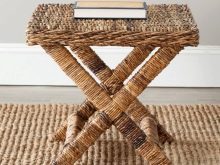
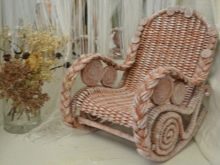

Consider what items can be woven from paper tubes, and also give a technique for their manufacture.
Tray made of paper tubes
This is a fairly simple product that can be attributed to the basic ones used in the educational process. It is quite within the power of a novice master to create such an object.
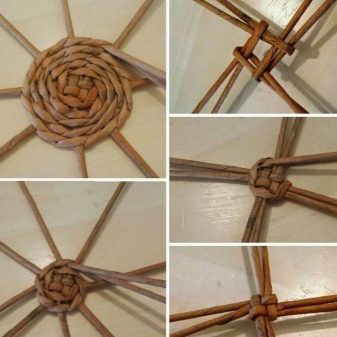
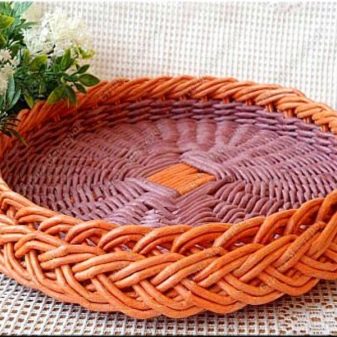
Here is the procedure for making it.
- 3 circles of the same diameter (25-35 cm) are made of thick cardboard.
- One of the prepared circles is covered with white acrylic dye, and then decorated using decoupage technique or painted at the request of the author.
- From the remaining circles, one more is taken, drawn into equal sectors using a protractor. The optimal angle is 10 degrees. From the center, along the obtained points, rays are drawn to the edges. They are glued to each ray along the edge of the tube.
- On top of the resulting "sun" the last - the remaining untouched - cardboard circle is superimposed and fixed with glue. This circle will form the bottom of the tray.
- The beams of the base are intertwined with paper tubes. The procedure is the simplest - "snake": one step inside, two outside. Be sure to stick tightly to the edge of the cardboard in order to securely close the ends.
- At the end of the first row, the base tubes rise. They should be upright. If the first steps were taken correctly, the tubules will hold well even without an additional frame.
- Continue braiding until the desired heights are reached. After that, cut off the ends, fix them on the product.
- Cover the tray with 2 layers of varnish. Then put a decorative bottom inside (the first circle, decorated for decoupage), fix it with glue.
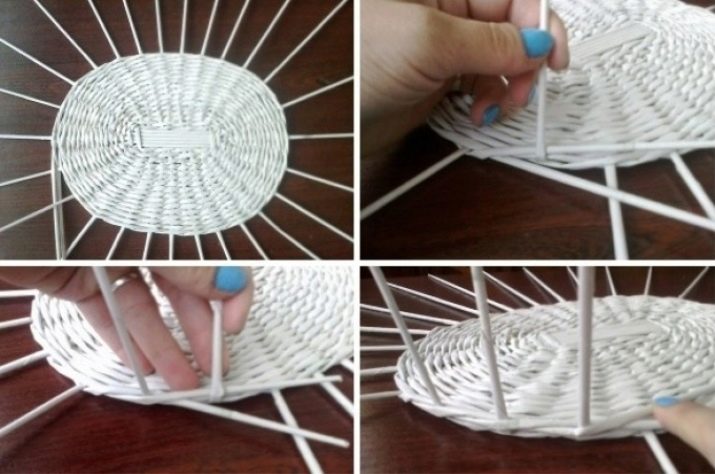
Acting according to the instructions, you can easily cope with unusual work and get a beautiful and functional household item.

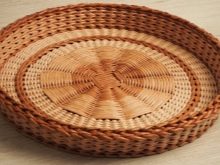
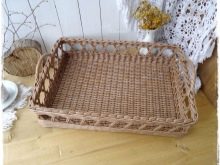
Coffee table
Having mastered the simplest products, you can try your hand at making paper pieces of furniture. Easy enough to make a coffee table. It does not have too complicated parts, and as a table top you can use a rounded glass blank, a wooden or plywood base of small thickness, vinyl plastic or sheet acrylic. In this case, the most common plastic waste basket is well suited as a form.
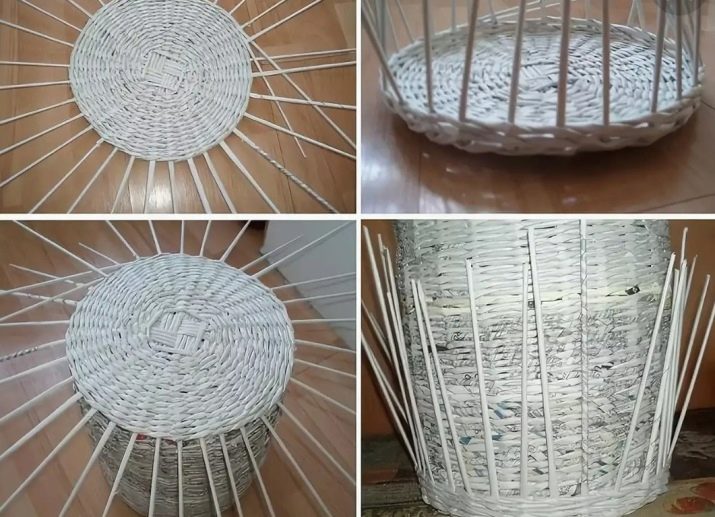
The step-by-step process of work will look as follows.
- A round blank is cut from a piece of cardboard. It should be larger in diameter than the mold frame (waste basket). It is drawn in a circle at the edge, and then holes are made along this line equal to the diameter of the tubes.
- The workpiece is laid on the floor or other surface where it will be convenient to work, and a waste basket is installed in the center of it, which acts as a form. Around it, paper tubes are stuck into the holes made. This will fix them vertically.
- Then weaving begins - it should be carried out taking into account the narrowing in the central part along the height of the form. The diameter of the taper will be approximately equal to the diameter of the bottom of the waste bin.
- After reaching the weaving process of the place of maximum narrowing, it is necessary to weave the bottom of the base of the coffee table. To do this, several folded tubes are connected crosswise, then a "sun" is formed with an angle of about 8-10 degrees between the tubes. It is braided according to the standard pattern to the required diameter.
- The bottom is inserted into the structure. It will become a stiffener for the product. The protruding tubes are bent and then woven into the overall structure.
- The uprights can be lengthened, if necessary, by inserting newspaper tubes into each other. The cardboard is removed. The same frame is installed on the bottom, but with its wide part up.
- Weaving continues to the top of the frame part. Then the trash bin is removed, the tubes are bent to the center, an additional one is inserted next to each. 5 rows are woven inside the circle, outward (along additional tubes) 3 more - for the sides of the table top.
- Then all the tubes are brought out inward, cut under the edge and fixed with glue.
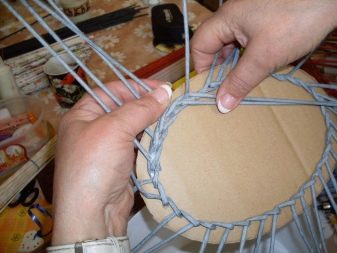
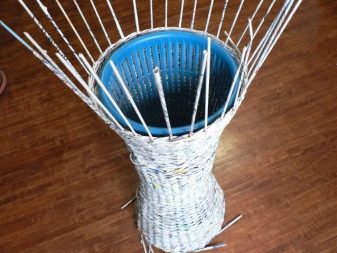
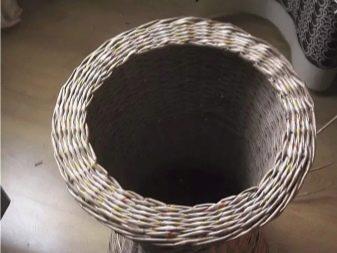
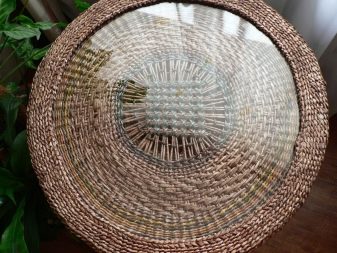
A cover is woven for each part to strengthen the structure. Then glass is applied to the top, which is braided along the sides. The structure is assembled, varnished or painted.

Recommendations
Wicker furniture has its own secrets. Experienced craftsmen have long found ways to simplify the laborious process and apply them in practice. Some of the useful ideas are particularly useful ones.
- Folding workpieces "accordion". If using thick paper, this will make it easier to form the tubes.
- Connection of equipment. With the help of a screwdriver, you can wind many tubes in a short time without exerting too much effort.
- Diagonal winding. With a good coil density, you will not need to additionally glue the workpieces along the entire length.
- Thickening on 1 side. By slightly widening the edge, you can achieve a seamless connection of the tubes by simply inserting them into each other. If you make them with an equal diameter along the entire length, fixation will be difficult.
- The choice of the frame base depends on the size and shape of the product. A plastic water bottle is suitable for a vase. You can also use plastic buckets, trays, dishes, summer country chairs as a temporary form.
- Anchoring. At the end of weaving, the "tails" of the paper tubes should be glued to the base.
- Drying. After completing weaving, it is worth leaving the product overnight, allowing the adhesive to grab.
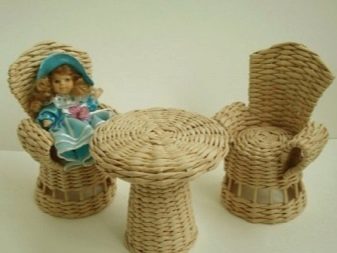

Finishing
To make the paper rolls look as close as possible to a wooden vine, they are covered with varnish or spray paint. It is best to use acrylic-based formulations.
All these recommendations will help you to master weaving furniture from paper or newspaper tubes much faster, make the process of work easier and faster.
Making a coffee table from newspaper tubes in the video.








